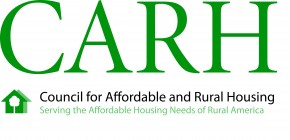- November 2022
- October 2022
- September 2022
- August 2022
- July 2022
- June 2022
- May 2022
- April 2022
- March 2022
- February 2022
- January 2022
- December 2021
- November 2021
- October 2021
- September 2021
- August 2021
- July 2021
- June 2021
- May 2021
- April 2021
- March 2021
- February 2021
- January 2021
- December 2020
- November 2020
- October 2020
- September 2020
- August 2020
- July 2020
- June 2020
- May 2020
- April 2020
- March 2020
- February 2020
- January 2020
- December 2019
- November 2019
- October 2019
- September 2019
- August 2019
- July 2019
- June 2019
- May 2019
- April 2019
- March 2019
- February 2019
- January 2019
- December 2018
- November 2018
- October 2018
- September 2018
- August 2018
- July 2018
- June 2018
- May 2018
- April 2018
- March 2018
- February 2018
- January 2018
- December 2017
- November 2017
- October 2017
- September 2017
- August 2017
- July 2017
- June 2017
- May 2017
- April 2017
- March 2017
- February 2017
- January 2017
- December 2016
- November 2016
- October 2016
- September 2016
- August 2016
- July 2016
- June 2016
- May 2016
- April 2016
- March 2016
- February 2016
- January 2016
- December 2015
- November 2015
- October 2015
- September 2015
- August 2015
- July 2015
- June 2015
- May 2015
- April 2015
- March 2015
- February 2015
- January 2015
- December 2014
- November 2014
- October 2014
- September 2014
- August 2014
- July 2014
- June 2014
- May 2014
- April 2014
- March 2014
- February 2014
- January 2014
IRS and Treasury Release Final Regulations on Opportunity Zones
BROADCAST EMAIL – Regulatory Update
On December 19, the Department of Treasury and Internal Revenue Service (IRS) issued final regulations providing details about investment in qualified opportunity zones (QOZ). The final regulations modified and finalized the proposed regulations that were issued on October 28, 2018 and May 1, 2019.
According to the IRS’ press release:
“The final regulations provide additional guidance for taxpayers eligible to make an election to temporarily defer the inclusion in gross income of certain eligible gain. The final regulations also address, the ability of such taxpayers’ eligibility to increase the basis in their qualifying investment equal to the fair market value of the investment on the date that it is sold, after holding the equity interest for at least 10 years.
The statute permits the deferral of all or part of a gain that would otherwise be included in income, if corresponding amounts are invested into a qualified opportunity fund (QOF). The gain is deferred until an inclusion event or Dec. 31, 2026, whichever is earlier. The final regulations provide a list of inclusion events. Further, the final regulations provide guidance to determine the amount of income that must be included at the time of the inclusion event or December 31, 2026.
The final regulations also address the various requirements that must be met to qualify as a QOF, as well as the requirements an entity must meet to qualify as a QOZ business. In order to provide clarity, the final regulations have modified the proposed regulations for QOFs and QOZ businesses. Specifically, the final regulations provide additional guidance on how an entity becomes a QOF or QOZ business, and the requirement that a QOF or QOZ business engage in a trade or business. The final regulations retain the general approach of the proposed regulations but provide additional guidance and clarity to the rules regarding QOZ business property.
Related forms, instructions and other information taxpayers need to take advantage of this update will be made available in January 2020.”
Treasury also published Frequently Asked Questions in regards to the regulations.
CARH will review the final regulations and provide more in-depth discussion during CARH’s 2020 Midyear Meeting.





